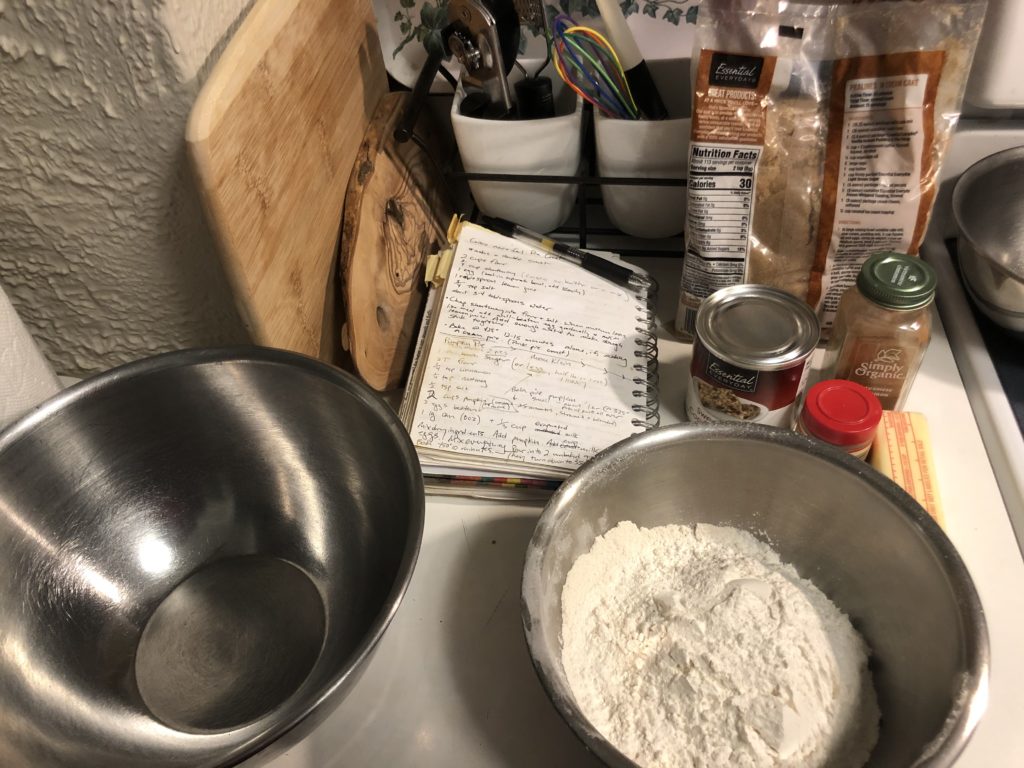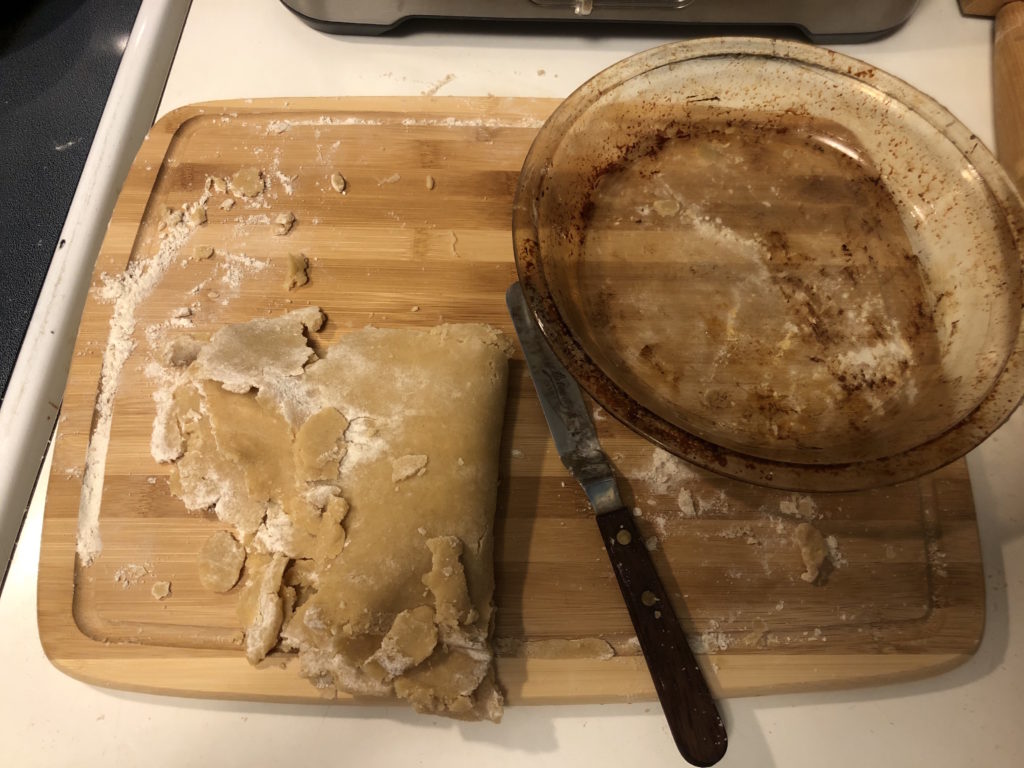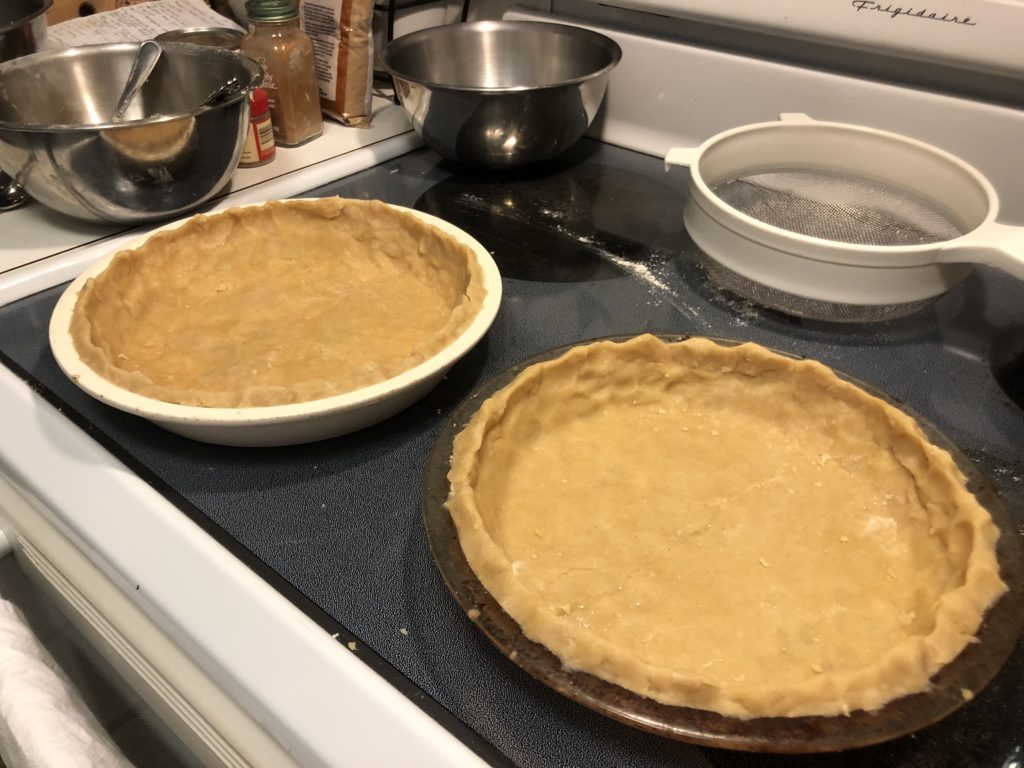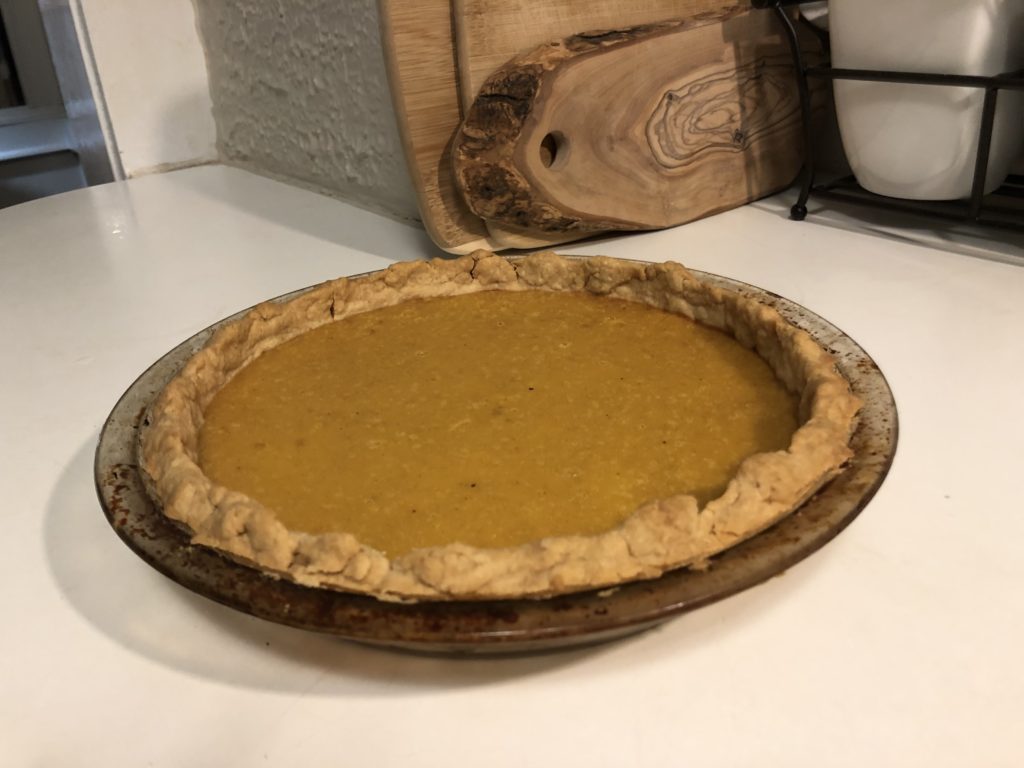Pie crust as rough draft
The day before Thanksgiving, I set out to make a pumpkin pie from scratch. I roasted pie pumpkins (that’s the easy part) and pulled out my crust recipe, which is hand-written in a notebook smeared with butter stains and dusted with flour from pies of Thanksgivings past.
Long past: I realized as I scanned the instructions that it had been years since I attempted pie crust, a notoriously difficult pastry maneuver.

Assembling the simple ingredients went well, and soon my hands were deep in a mealy mix of flour, salt and butter. I added a little lemon juice and a nicely moist dough was ready to roll.
Flour the rolling pin, roll the pie dough into a rough circle: all right on target. Until the critical step: transferring that flat dough into a pie pan.
The pie crust master I learned from recommended folding the dough in half, and in half again, then lift with a spatula into the pan. Simple in theory…
But super awkward in practice. Dough stuck to the counter and cracked down the fold. Thin bits from the edges fell off and thick bits made the crust, once in the middle of the pan, lumpy and unattractive.
My crust looked like a big fat, unappetizing mess. I thought about the garbage can.

Then I thought about writing. Every story or novel I’ve written is at one point or another a big, lumpy mess. Too much in some places, not enough in others. A mass not even resembling what I want it too look like in the end.
Back to the pie crust: You can’t make the pie without that messy transfer into the pan. I massaged the crust to even out the thickness. I picked up bits that had fallen and pressed them into bald spots. I trimmed away the rough edges and pressed what was left into a minimal but presentable pattern.

All this ugly pie crust manipulation was not a mistake to hide—it was necessary step in the metamorphosis from dough to pie.
In writing, I avoid the oft-used term “shitty first draft.” I understand why it’s used, and I’m guiltier than most writers of giving myself only one chance to get a story perfect. Still, I believe the messy material I produce in a first draft is not shit—just raw. Unformed; overmuch in some spots, too much in others. Definitely uncooked. But necessary after all.
Precisely like that pie crust.

I’m glad I persevered through the messy, formless phase of pie crust making. The finished two pies looked pretty good. More importantly, they were delicious.
And I’m going to remember this tomorrow morning when I get back to my work in progress, a story that’s bulky, uneven, cracked along the seems. It looks little like the vision I have for it. But I have hope for this raw dough.